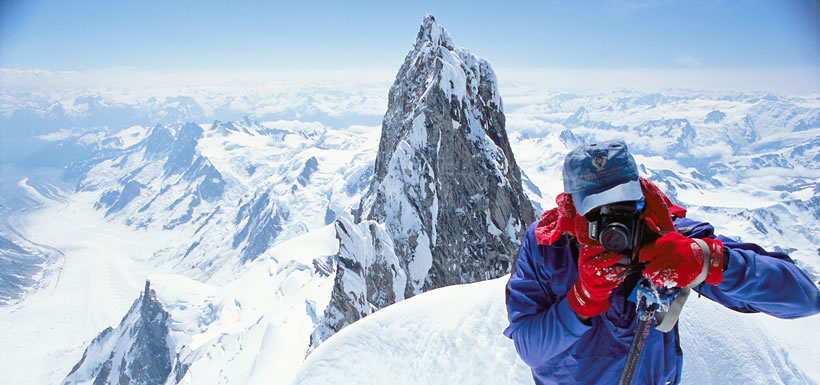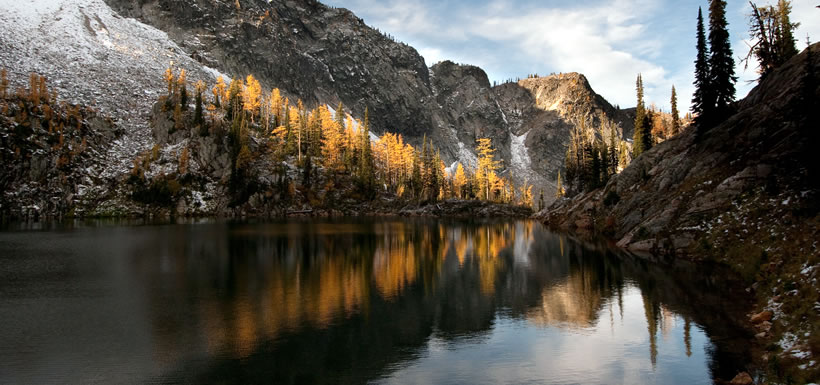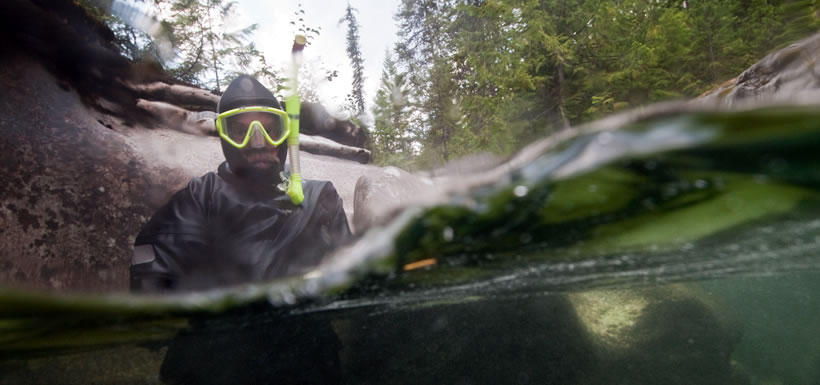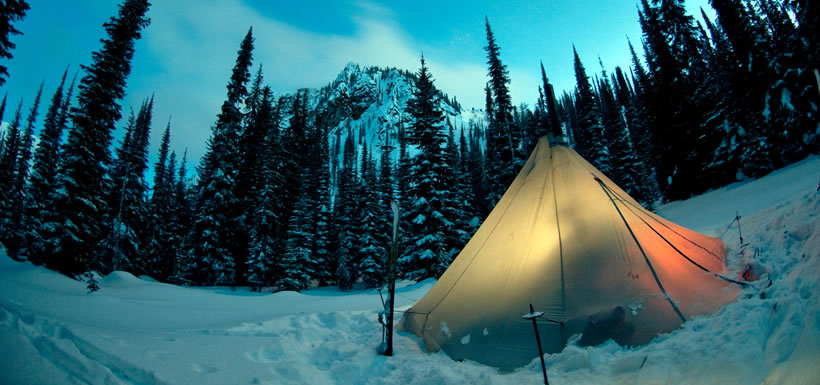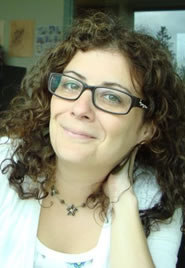An interview with Bruce Kirkby: The call to conserve Canada’s last frontiers
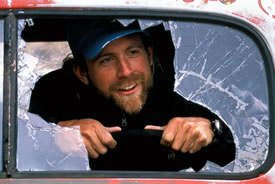
Bruce Kirkby (Photo courtesy of Bruce Kirkby)
Bruce Kirkby is a writer, photographer, traveler and adventurer. As a columnist for The Globe and Mail, contributor to Canadian Geographic and the New York Times and author of two books (Sand Dance and Dolphin’s Tooth), Bruce’s journeys have taken him across Arabia by camel, down the Blue Nile on raft and across Iceland by foot.
Recently, Christine Beevis Trickett, managing editor of Land Lines, sat down with Bruce to speak about his work, his passion for wildlife and his commitment to conservation.
CBT: Bruce, you recently spoke about the notion of the frontier at an event hosted for NCC’s supporters in Calgary. Can you describe that idea a bit more and why it’s important?
BK: Part of our heritage as Calgarians and Albertans is the sense of pride of being on the frontier — it’s shaped the values of Calgarians and Albertans, regardless of our political stripes. All Canadians do to a different degree, as well — we identify with the frontier to the north or on either coast. There’s this sense that we live in a wild place.
The frontier was always where people went to get rich and exploit. It gave so much to us, but now it’s time for us to give back to the frontier. We need to start protecting it, because it’s evaporating under our feet.
Canadians' pride in the frontier is strong. It was given to us for a long time, but now it needs us and we need to give back to it.
CBT: How did you become a wilderness adventurer and an advocate for protecting these places?
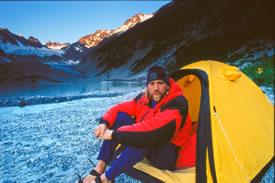
Adventurer Bruce Kirkby (Photo courtesy Bruce Kirkby)
BK: The frontier drew me in at first as a young guy in my twenties. It was wild, and I wanted to go run big rivers and experience these places. But the wild affects people. And as we learn more about it, we tend to connect with it.
I remember lying on the banks of the Tatshenshini River in northern British Columbia, having seen grizzlies earlier in the day. I was struck by the immensity of the land and the wholeness of this landscape, which hadn’t been cut up by roads or development.
And then I was struck by the dichotomy of the wilderness: on the one hand it seemed so strong and I felt this was a place that would be here long after we were gone. But on the other hand, I sensed how incredibly fragile it is.
That realization would have been hard for me to see if I hadn’t experienced it first-hand.
CBT: You’ve been fortunate to be able to experience some of the world’s most spectacular places and it has obviously had an impact on you. But what about the people who aren’t able to get out into these wild places? Can they still have the same appreciation for the need to protect these places if they’ve never experienced them?
BK: For someone who’s dense and thick like me, it helps to get smacked on the head. But there’s wilderness and nature all around us. We can connect with nature in so many ways, whether it’s walking along the Bow River Trail in Calgary or hiking through the Rouge River Park in Toronto.
We just need to get out there — we have this connection with nature inside of us; it just needs to be nurtured. What concerns me is the growing disconnect between nature and humanity. This disconnect with nature is a popular theme lately. And when we hear that we need to get out in nature, it sounds like just another thing we’ve got to do. It’s almost like it’s been commoditized.
The challenge is to find a way to get outside so that it doesn’t feel like a duty or an obligation. The problem as I see it is that our Canadian infrastructure doesn’t encourage walking to the corner store, the grocery store or elsewhere. But being outside has to be a part of everything — we need to find inventive ways of integrating nature into our daily lives.
Interview continues below the slideshow.
CBT: Having travelled around the globe, is there one thing that you could point to that makes Canada’s landscapes and wild places unique?
BK: What’s unique about Canada is how much of the frontier we still have left. It’s such a vast and intact ecosystem and we’re lucky to have the opportunity before us to maintain it.
CBT: Isn’t it a dangerous, in some ways, to have such a sense of an infinite frontier?
BK: Absolutely, this sense of an infinite frontier is misleading. Although much of these areas are publicly or privately held, at the same time, every single valley has been claimed or explored. So despite its immensity, we’ve reached the end of the frontier. There’s nowhere that anyone’s missed. No blank spots on the map.
CBT: The Nature Conservancy of Canada (NCC) works in partnership with landowners and other groups to ensure that they can maintain working landscapes and ensure that these areas can be enjoyed. In a sense, many of NCC’s protected areas are not wilderness frontiers. What do you have to say about NCC’s approach to working in partnership with these groups?
BK: To me, NCC’s approach to conservation represents one of the critical shifts in thinking about conservation. I think there’s a false paradigm in conservation — that you’re either for progress or for the environment. But so many examples exist where consensus building is the way forward. Canada is leading the way both on public and private land conservation. We have an opportunity to show the way forward and be an international role model.
There are so many inventive ways to let a variety of activities take place on the land — they’re win-win situations to maintain the natural values of these places while allowing working landscapes. It’s a common misconception that if something is preserved, we build fences around it. To just think this is the way forward is missing the point.
NCC is offering opportunities to landowners to keep working on them. This is critical. For example, there’s the Frog Bear Conservation Corridor in BC, and the Waldron in Alberta — projects where NCC is working with landowners in inventive ways to conserve the natural values of the land.
The Muskwa-Kechika Management Area in northern BC is another great example of industry and environmentalists coming to the table to protect public lands. This is such a great example of where we could go.
Too often, these issues are polarized as a fight between one option or the other. But conservation shouldn’t be a choice between business or the environment — we just can’t afford to le that happen anymore.
CBT: Thank you, Bruce. Is there anything else you’d like to add?
BK: I’d just reiterate what a special time we’re at right now. We have a generation of baby boomers with so much wealth, many of which are on the cusp of a transfer of their inheritance — whether they are landowners or not. This is a generation that’s had a lot of opportunity and prosperity. It’s important to get the word out about the variety of options to transfer their wealth to the next generation — there are opportunities for land donations, easements and so much more that can be a significant contribution to conservation.
Who knows if we’ll have this opportunity again?
CBT: Thanks again, Bruce!
Keep up with Bruce’s latest work:
www.brucekirkby.com
www.facebook.com/brucekirkby
www.twitter.com/bruce_kirkby
www.instagram.com/brucekirkby

